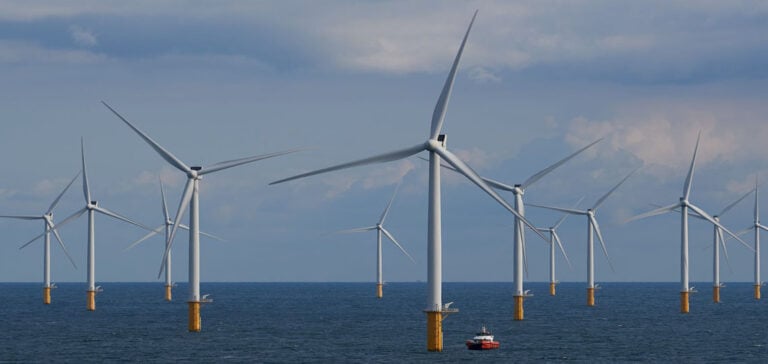The offshore wind industry in the USA has evolved more slowly than in Europe due to the time needed for the states and the federal government to provide subsidies and develop rules and regulations, slowing down leasing and permitting. However, as government policies have begun to align in favor of the industry in recent years, offshore wind developers have unveiled numerous projects, mainly on the US east coast. Two small projects went into operation:Orsted ‘s five-turbine Block Island wind farm in Rhode Island, and the first two test turbines of Dominion Energy’s Coastal Virginia Offshore Wind project in Virginia. Then came an obstacle.
Inflation
The COVID-19 pandemic disrupted supply chains and drove up equipment and labor costs, making new projects much more expensive than initially anticipated. “It appears that the offshore wind industry has bid aggressively for early projects to establish itself as a promising new industry, anticipating steep cost declines similar to those seen in onshore wind, solar and batteries over the past decade,” Eli Rubin, senior energy analyst at energy consultancy EBW Analytics Group, told Reuters. “Instead, significant cost gains have thrown finance and project development into confusion,” added Rubin, noting that many contracts are likely to be renegotiated as states seek to decarbonize, with higher prices ultimately weighing on electricity consumers.
Interest rates
Financing costs also climbed as the US Federal Reserve raised interest rates to control inflation. Many contracts for offshore wind projects do not include any provision for adjustment in the event of higher interest rates or costs. Some developers have paid to terminate their contracts rather than build them and face years of losses or low returns. In Massachusetts, for example, two offshore wind developers, SouthCoast Wind and Commonwealth Wind, agreed to pay to terminate contracts that would have provided around 2,400 MW of energy, enough to power over a million homes.
In New York, offshore wind developers Equinor and BP also sought to raise the price of electricity produced in their planned projects, but were rejected. Meanwhile, Orsted told utility regulators in June that it would not be able to make a final investment decision to build its 924 MW Sunrise Wind project unless its power purchase agreement was amended to take account of inflation.
Insufficient subsidies
The Biden administration has sought to boost clean energy development by passing the Inflation Reduction Act (IRA), an ambitious law granting billions of dollars in incentives to climate change projects. Since the law was passed last year, companies have announced billions of dollars of investment in the manufacture of solar panels and batteries for electric vehicles in the United States.
However, the offshore wind industry is not entirely satisfied. Bonus incentives for using domestic materials and locating projects in disadvantaged communities are too hard to come by, say developers, and are crucial to the viability of projects in a high-cost environment. The credits each represent 10% of a project’s cost and can be claimed as a bonus, in addition to the 30% basic IRA credit for renewable energy projects, bringing a project’s total subsidy up to 50%. Equinor, France’s Engie, Portugal’s EDP Renewables, and trade groups representing other offshore wind developers in the U.S. told Reuters they were lobbying officials to rewrite the requirements and warned of job and investment losses otherwise.
The US offshore wind industry faces several major challenges, including inflation, high interest rates and insufficient subsidies. These obstacles have an impact on the viability of the projects and raise questions about whether the Biden administration’s climate change goals will be met. If offshore wind is to play a key role in the transition to cleaner energy, we need to overcome these difficulties and find solutions to ensure a more sustainable future.






















